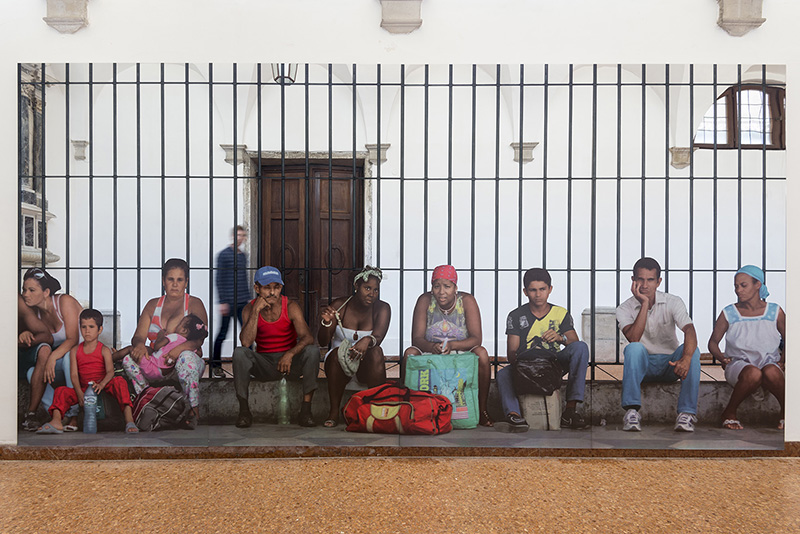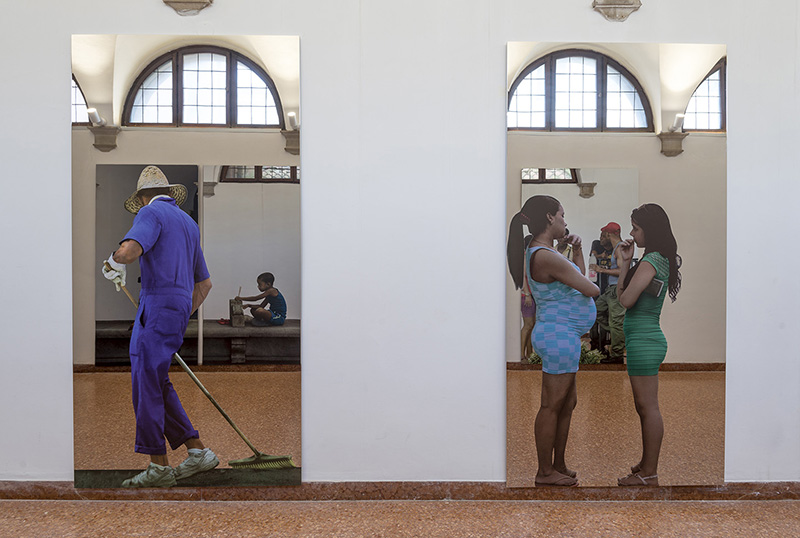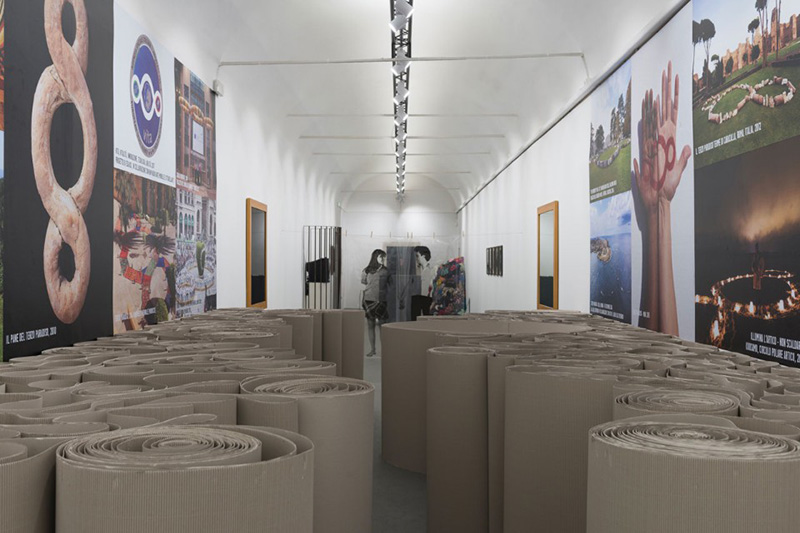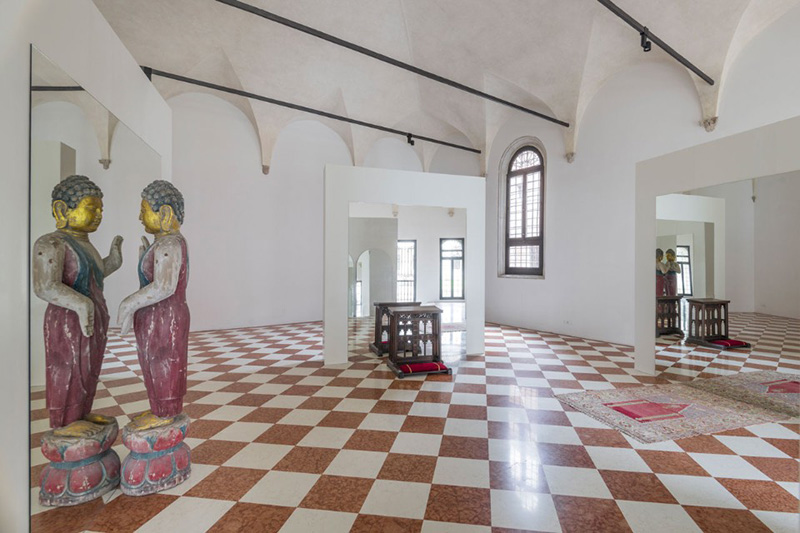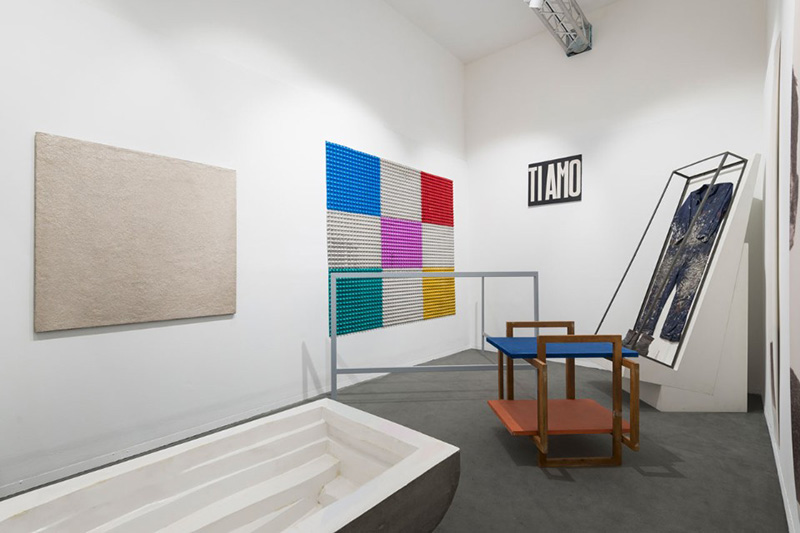ART CITIES:Venice-Michelangelo Pistoletto
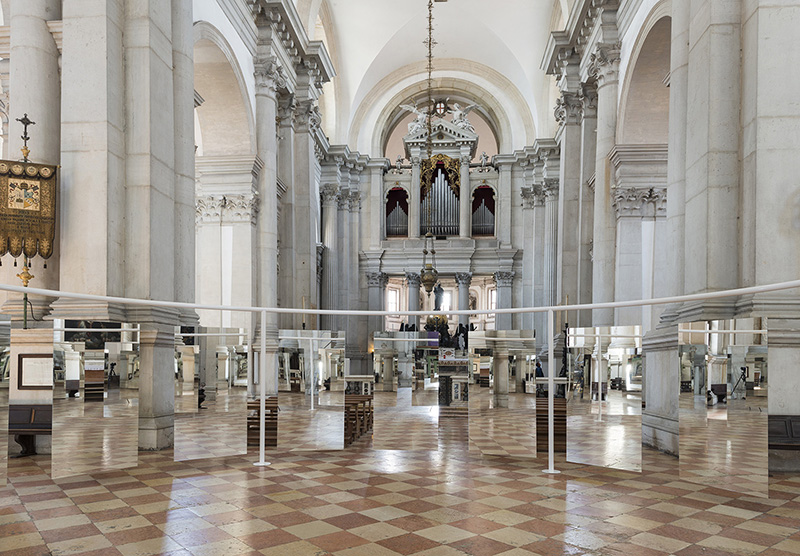 Michelangelo Pistoletto, who had a key role in the 20th Century in the developing of Arte Povera, presents a site-specific exhibition for the Basilica of San Giorgio Maggiore and for the adjoining spaces of the Sala del Capitolo and the Officina dell’Arte Spirituale, reflecting on destiny of humankind needing an urgent social change.
Michelangelo Pistoletto, who had a key role in the 20th Century in the developing of Arte Povera, presents a site-specific exhibition for the Basilica of San Giorgio Maggiore and for the adjoining spaces of the Sala del Capitolo and the Officina dell’Arte Spirituale, reflecting on destiny of humankind needing an urgent social change.
By Dimitris Lempesis
Photo: Associazione Arte Continua Archive
In the center of the Basilica of San Giorgio Maggiore the visitor is welcomed by the installation “Suspended Perimeter–Love Difference”, a series of mirrors organized in circle as a sort of opposite altar, with the mirrors mediating between the visible and the nonvisible, extending vision beyond its normal faculties, expanding the features of the eye and the capacity of the mind, to the point of offering us a view of totality. Mirrors expand capacity of the eye and of the mind, mediating between the visible and the non-visible. Set up in a space devoted to prayer and worship, the work acquires original force related to one of the most emergent themes facing humankind in the contemporary world like the conflict between religions, the acceptance of differences and multiculturality seeking the role of art in creating a common commitment. In his manifesto “Love Difference” (2002), Michelangelo Pistoletto says “Love Difference encapsulates a concept which goes beyond a rational notion of ‘tolerance’ for what is diverse and penetrates directly into the sphere of feelings […]. The first thing to accept, in an open, sensitive and warm fashion, are the differences between people and social groups, in order to finally give meaning to the word ‘humanity…”. In the Sala del Capitolo is on view “In Il Tempo del Giudizio”, in the installation the four most widespread religions in the world (Christianity, Buddhism, Islam, Judaism) are each prompted to reflect upon themselves in a moment of radical selfconfession.Each of the works in the complex exhibition project has its own story, its own memory, in a spatiotemporal continuum that does not allow for sudden rifts or fractures. The previously unshown “DNA spirituale dell’arte” seems to be the genetic transcription of the Third Paradise, one of Pistoletto’s best-known signs, where the natural world coexists with the artificial and technological world, creating a renewed harmony. In the Palladian Basilica, the symbol of the Third Paradise ideally connects a mirror with a handprint on the wall of a cave. The exhibition also features a series of mirror paintings focused on Cuba.
Info: Curator: Lorenzo Fiaschi, Basilica di San Giorgio, Isola di San Giorgio Maggiore, Venice, Duration 10/5-26/11/17, Days & Hours: Tue-Sat 10:00-18:00, Sun 14:00-18:00, http://arteallarte.org

